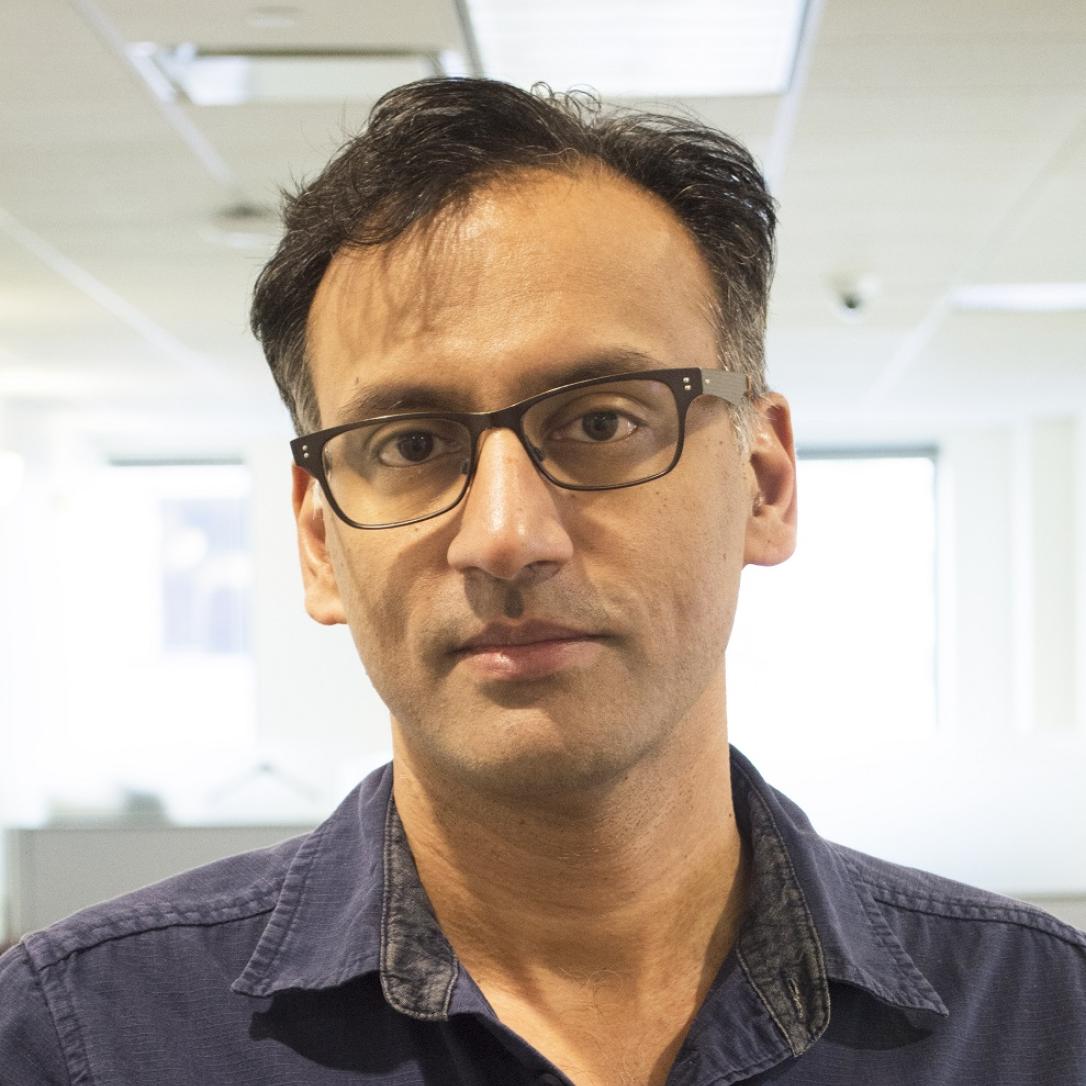Sundeep Rangan | Source | Professor of Electrical & Computer Engineering and Assoc. Dir. of NYU WIRELES...

Sundeep Rangan
Dr. Rangan received the B.A.Sc. at the University of Waterloo, Canada and the M.Sc. and Ph.D. at the University of California, Berkeley, all in Electrical Engineering. He has held postdoctoral appointments at the University of Michigan, Ann Arbor and Bell Labs. In 2000, he co-founded (with four others) Flarion Technologies, a spin-off of Bell Labs, that developed Flash OFDM, the first cellular OFDM data system and pre-cursor to 4G cellular systems including LTE and WiMAX. In 2006, Flarion was acquired by Qualcomm Technologies. Dr. Rangan was a Director of Engineering at Qualcomm involved in OFDM infrastructure products. He joined the ECE department at NYU Tandon (formerly NYU Polytechnic) in 2010. He is a Fellow of the IEEE and the Associate Director of NYU WIRELESS, an industry-academic research center on next-generation wireless systems.
-

NYU Tandon School of Engineering
Professor of Electrical & Computer Engineering and Assoc. Dir. of NYU WIRELESS
-
Future of wireless. Sundeep Rangan Ep4
Listen to this episode from Sciencei on Spotify. In this episode, we discuss 5G technology and novel applications which may utilize this technology. We overview the situation in wireless industry and discuss the future of wireless technology. Sundeep covers a lot of interesting points during the discussion. Do not miss it!Please, feel free to contact us in the social media.https://www.instagram.com/sciencei_fi/(@sciencei_fi)Feedback and more information:info@sciencei.fiWe appreciate your support:https://www.patreon.com/scienceiSundeep Rangan:https://wireless.engineering.nyu.edu/sundeep-rangan/Music by Joseph McDadehttps://josephmcdade.com/music
Podcast -
5G wireless to connect robots on the ground to AI in the cloud | NYU Tandon School of Engineering
A research team at the NYU Tandon School of Engineering, with the support of the National Science Foundation’s National Robotics Initiative 2.0, is building the foundations of a wireless system that takes advantage of superfast fifth-generation (5G) wireless communications to outsource a mobile robots’ artificial intelligence (AI) functions to the edge cloud — the server in the cloud closest to the robot.
Article -
Could antenna fatigue be holding up 5G technology?
Companies are preparing for the next generation of wireless tech. But getting the infrastructure in place has its own challenges.
Article
-
"5G systems offer the potential for vastly higher data rates, but real-time cloud robotics remains challenging. While cloud robotics has long been seen as a way to offload power-consuming computation, it has remained elusive for real-time perception and control because of limited bandwidth and high latency of wireless communication systems. The problem is exacerbated by the need to support the bandwidth-hungry video and LIDAR systems commonly used on robots today. A particular difficulty is that 5G communication using the millimeter wave (mmWave) bands are highly susceptible to blockage. As a result, links can have high peak data rates, but may be only intermittently available.”
“Cellular systems are extremely advanced and the technological innovation requires that there is private incentive and competition. Vital to maintaining this leadership position for 5G is that we sustain a rich, competitive landscape of top-tier operators competing to deliver the best services to users. Efforts to centralize or nationalize this would undermine such incentives to continue to lead.”
"Right now 4G networks deliver really good service, so a lot of people are not fundamentally in need of significantly higher data rates, and that means, at least for consumers, there is not an obvious business case for 5G for current applications,” Rangan said. “New applications like mobile VR and AR could change that, as you would need extremely high data rates to enable them on mobile devices. For 4G, a big turning point was the iPhone, which gave people a platform at their fingertips from which they could access the web. This created a huge market and appetite for much more data, subsequently driving a lot of development in enabling more data delivery wirelessly."
"We have about 15 faculty members at the center, and that’s super interesting because it’s a very diverse group Including people who are developing ways of applying wireless technology to things like telemedicine, machine vision, security, drones, the physical layer, and more," Rangan said. "What's more important than the name or number of next-generation wireless systems is what that technology will be shaped by. With 5G we've been focused on data rates, but with 6G it may be something else, like lower power consumption, and the security & resiliency of data & wireless infrastructure."


